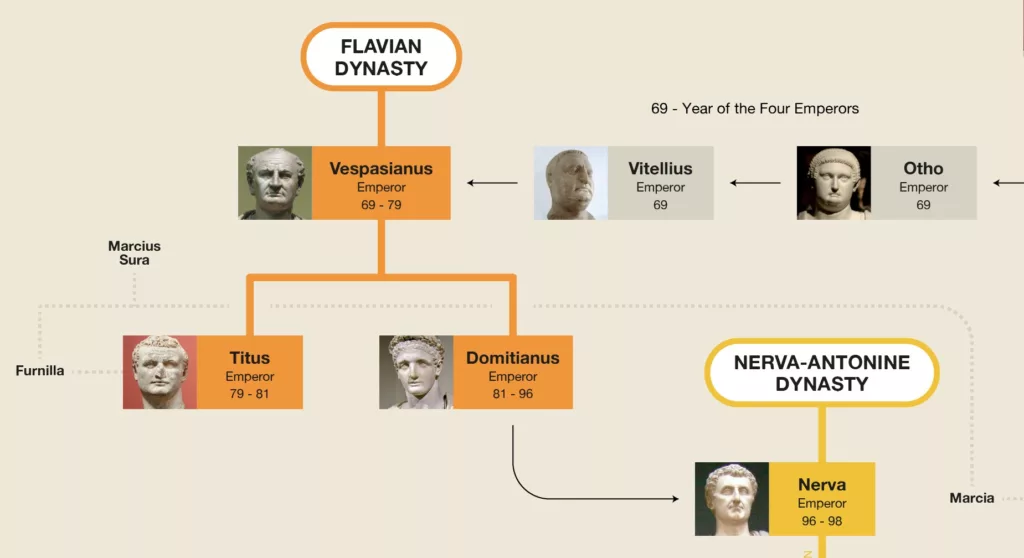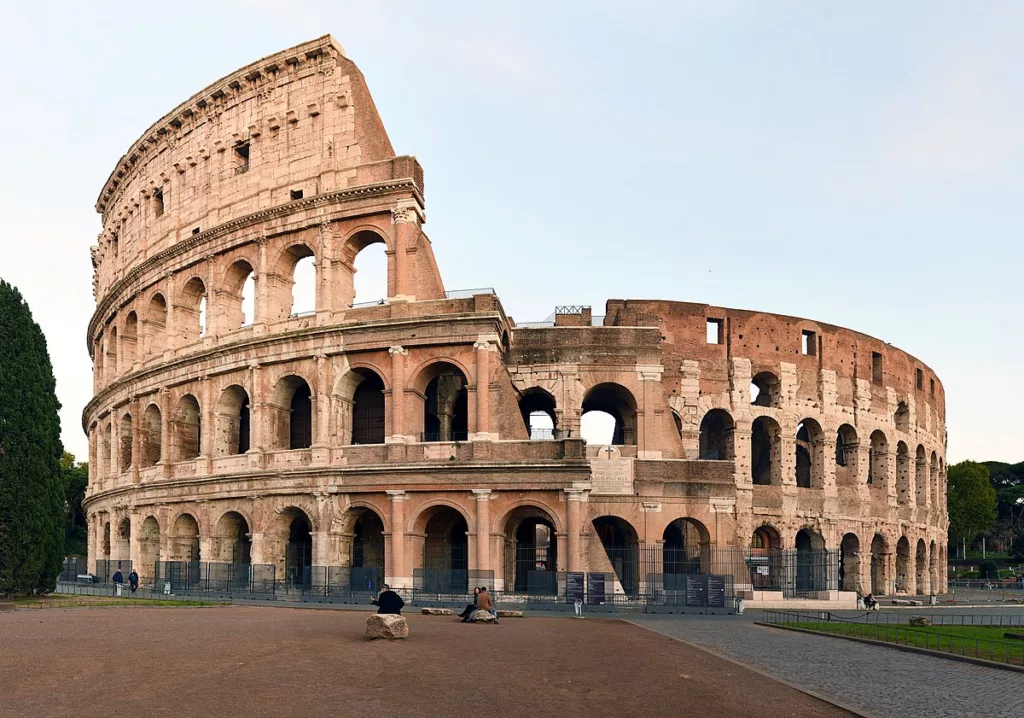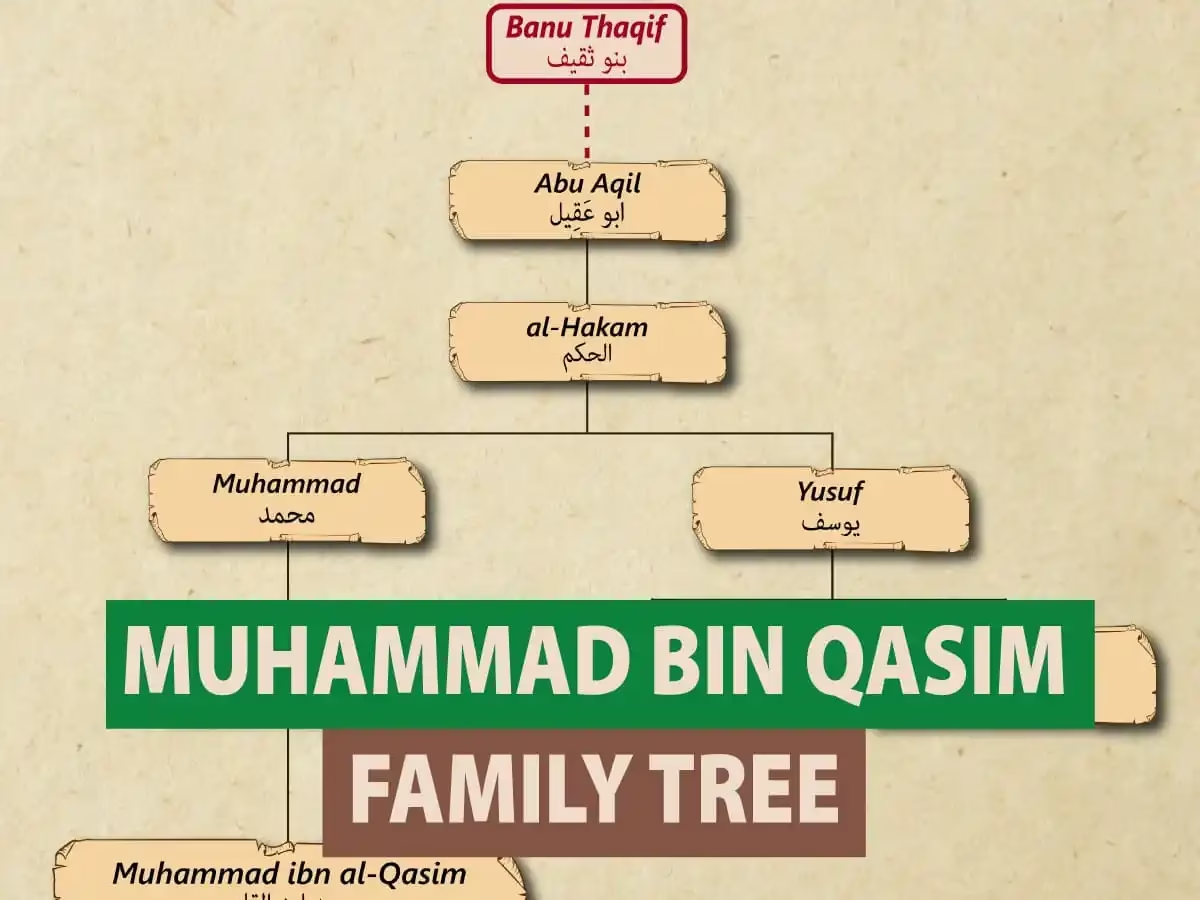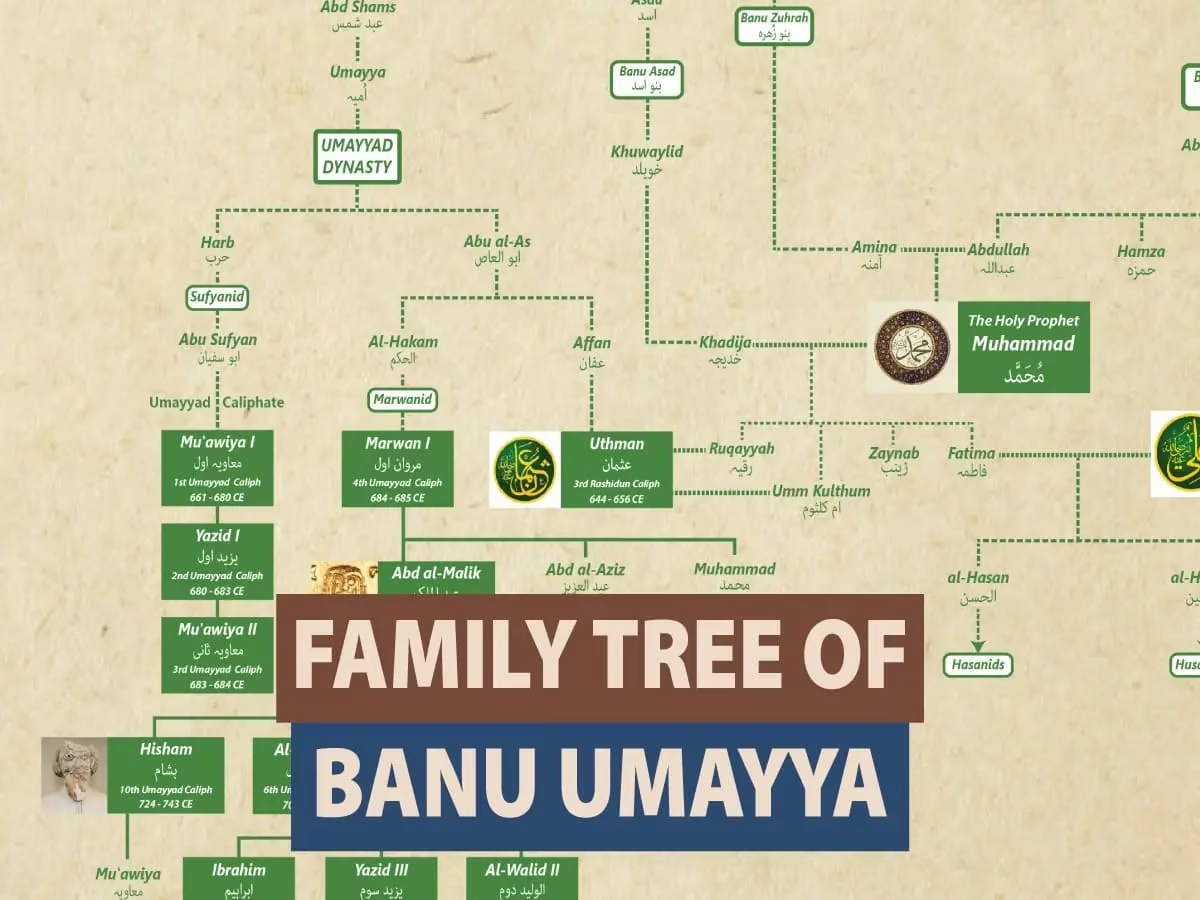The Flavian Dynasty emerged after one of the most chaotic periods in Roman history — the Year of the Four Emperors (69 AD). When the Julio-Claudian dynasty collapsed after Nero’s death, Rome plunged into civil war. Out of this turmoil came a new ruling family: the Flavians, a dynasty that restored order, strengthened the empire, and left behind some of Rome’s most iconic monuments.
The family tree shown in your chart highlights the three emperors of this short yet influential dynasty: Vespasian, Titus, and Domitian.

Vespasian (69–79 AD): Founder of the Dynasty
Titus Flavius Vespasianus, better known as Emperor Vespasian, was a highly respected general who gained fame for his campaigns in Judaea. During the turmoil of 69 AD, he was proclaimed emperor by his eastern legions.
Key Achievements
- Restored political and financial stability after the civil war
- Reorganized the imperial finances
- Began construction of the Flavian Amphitheatre, known today as the Colosseum
- Repaired Rome’s infrastructure after Nero’s devastating policies

Vespasian’s rise marked the beginning of a new, more practical type of leadership — one rooted in military command rather than aristocratic bloodline.
Titus (79–81 AD): The Beloved Son and Emperor
Titus, Vespasian’s elder son, succeeded his father peacefully — a rare smooth transition in early imperial Rome.
Highlights of His Reign
- Oversaw the completion and grand opening of the Colosseum
- Provided remarkable relief efforts during catastrophic events:
- The eruption of Mount Vesuvius (79 AD)
- A major fire in Rome (80 AD)
- Was deeply admired by the Roman people for his generosity, earning the nickname “Delight of the Human Race.”
Although his reign was short, Titus is remembered as one of Rome’s most compassionate emperors.
Domitian (81–96 AD): The Last Flavian Emperor
Domitian, younger brother of Titus, became emperor after his brother’s sudden death. His rule was longer and more controversial.
Domitian’s Legacy
- Strengthened the empire’s borders, especially in Dacia and along the Rhine
- Reformed taxation and expanded the bureaucracy
- Promoted large-scale building programs
- Ruled with increasing autocracy, which led to tension with the Senate
Domitian’s authoritarian style and harsh policies eventually resulted in his assassination in 96 AD, ending the Flavian Dynasty.
The End of the Flavians and Their Legacy
After Domitian’s death, the Senate chose Nerva as emperor, beginning the era of the Five Good Emperors.
But the Flavians left an enduring legacy:
Why the Flavian Dynasty Matters
- Restored peace after civil war
- Rebuilt Rome’s economy
- Constructed some of the most iconic structures in Roman history
- Strengthened imperial authority
The family tree from your chart captures this tight-knit ruling house — just three emperors whose combined leadership stabilized and reshaped Rome in profound ways.Vespasian (69–79 AD): Founder of the Dynasty
Titus Flavius Vespasianus, better known as Emperor Vespasian, was a highly respected general who gained fame for his campaigns in Judaea. During the turmoil of 69 AD, he was proclaimed emperor by his eastern legions.



